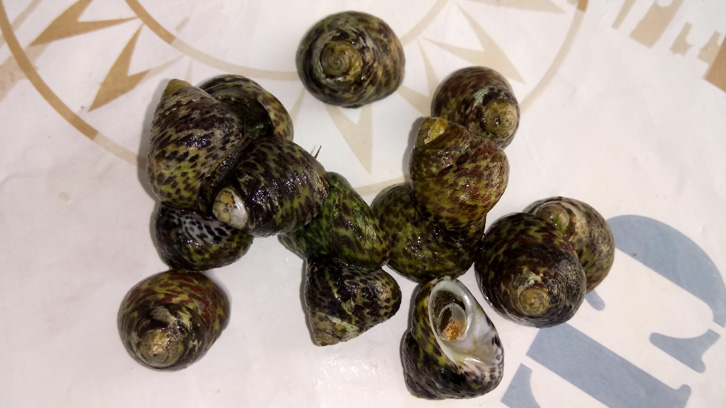Metallothioneins: the key to surviving in hostile environments

Snails are known for their interesting ability to accumulate and detoxify heavy metals. They have the ability to accumulate cadmium (a very toxic element) in a way that is innocuous when captured by metallothioneins. Metallothioneins are a family of small proteins very rich in cysteine, an amino acid that contains sulfur in the form of thiolate groups. These metallothioneins have an extraordinary ability to bind large quantities of various heavy metals.
The group led by Drs. Mercè Capdevila and Òscar Palacios, from the Chemistry Department of the UAB, have been working on the characterization of metallothioneins in different organisms for more than 25 years, in close collaboration with the group of Dr. Sílvia Atrian (Dept. Genètica, Univ. Barcelona). The work carried out over these years has allowed, among others, to propose a new classification system for these metalloproteins, the function of which is still a matter of debate. The study of metallothioneins of several species of snails, both marine and terrestrial, has made it possible to observe that depending on their needs, they can produce different isoforms of these proteins: with affinity for essential metals (Zn and / or Cu); specific to toxic metals (Cd); and even synthesize some polyvalent metallothioneins, which can be used to mobilize essential metals (Zn and Cu) or to handle toxic metals (Cd, Hg, etc.).
The group of Dr. Capdevila, together with her collaborators, has discovered that the common marine winkle (Littorina litorea) contains the longest version of this metalloprotein that has been found to date in snails, with an additional domain that confers it a high detoxification capacity. Scientists have solved the solution structure of this metallothionein by means of nuclear magnetic resonance techniques. Surprisingly, the protein of this mollusc comprises three independent domains, while other known metallothionein only have one or two. This feature increases its detoxifying capacity by one third and can therefore help the snail to survive in changing environments, such as those found in its habitat, or even in heavy metals polluted environments.
Recently, an additional work has also been published by these authors devoted to the in vitro study of the metal binding abilities of this metalloprotein. Here it has been possible to conclude that outside the organism this protein also has a great capacity to bind Cd2+, forming more stable species than with other cations like Zn2+ or Cu+. The interest generated by these results has provoked the first work to be mentioned in Science and the second one to be chosen to configure the cover of the journal where it has been published.
Chemistry Department
Universitat Autònoma de Barcelona
References
C. Baumann, A. Beil, S. Jurt, M. Niederwanger, O. Palacios, M. Capdevila, S. Atrian, R. Dallinger, O. Zerbe, Structural Adaptation of a Protein to Increased Metal Stress: NMR Structure of a Marine Snail Metallothionein with an Additional Domain, Angewandte Chemie International Edition 2017, 56, 4617. https://doi.org/10.1002/anie.201611873
O. Palacios, E. Jiménez-Martí, M. Niederwanger, S. Gil-Moreno, O. Zerbe, S. Atrian, R. Dallinger and M. Capdevila,Analysis of Metal-Binding Features of the Wild Type and Two Domain-Truncated Mutant Variants of Littorina littorea Metallothionein Reveals Its Cd-Specific Character, International Journal of Molecular Sciences 2017, 18(7), 1452; http://doi.org/10.3390/ijms18071452


